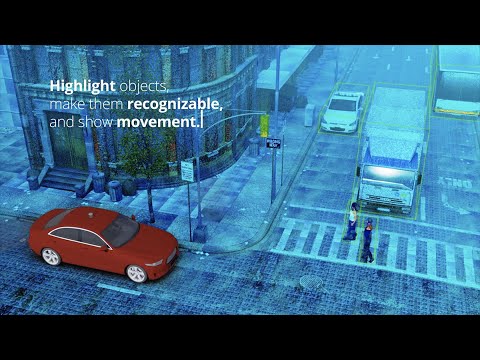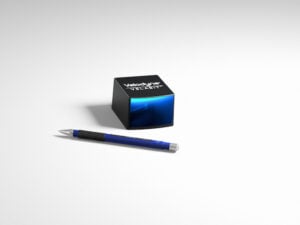The Device Chronicle interviews Mircea Gradu, Senior Vice President of Product & Quality at Velodyne Lidar about how this laser-based Lidar technology is advancing road safety, and automotive and industrial robot perception.
Mircea Gradu leads the product management strategy and product quality at Velodyne Lidar. Velodyne Lidar provides smart, powerful lidar solutions for autonomous vehicles, driver assistance, delivery solutions, robotics, navigation, mapping, and more. Velodyne’s high-performance product line includes a broad range of sensing solutions, including the cost-effective Puck, the versatile Ultra Puck, the autonomy-advancing Alpha Prime, the ADAS-optimized Velarray and the groundbreaking software for driver assistance, Vella. Velodyne Lidar offers two categories of products. One is in hardware, and the other one is in software, taken together they form a complete solution: This is the approach that Mircea Gradu and his product management team have pursued. This involves offering a complete perception solution.

Different sorts of Lidar sensors for different use cases
Velodyne Lidar has tremendous expertise in the laser-based technology that is Lidar. In this area, Mircea describes the two types of products Velodyne offers. The first type is a rotational sensor which offers a surround view with a 360 degree horizontal field of view. This allows for a creation of a complete field of view around an automotive vehicle or an industrial robot. The second type deals with embed-ability and sensors that are specifically designed to fit into the styling and design of a mobile robot or automotive vehicle. To this end, Velodyne Lidar offers solid state directional sensors with a general and wide field of view. These sensors offer in the range of 90 to 120 degrees in terms of the horizontal field of view and also have a very wide vertical field of view which makes them very suitable for a range of automotive applications. They are usually designed to perform a specific advanced driver assist system (ADAS) functionality and they can negotiate what would normally be the blind spot for drivers very well.

These sensors can also handle the monitoring of cross traffic detection and pedestrian automatic emergency braking (PAEB). A Velodyne Lidar sensor integrates obstacle detection, and tracking capability and recognition. The sensor can recognize objects based on the point cloud generated by the lidar, and it can perform static and dynamic object recognition. The Vella technology platform predicts the motion or trajectory of the moving objects. This mitigates against collision. With the automated emergency braking, the sensor can also calculate the trajectory of the moving target. If the sensor suddenly projects the motion of the vehicle, it can also do a real-time slam for mitigating the collision. When it comes to the general environment, it can also do high definition mapping. If you think about the vehicle that is going to generate a high definition map and based on that map, it can actually localize and then upload it on a cloud infrastructure. This high definition mapping and automated HD mapping is also very important. Mircea provides some context.Take, as examples, a warehouse environment or a hospital environment where you have an automated mobile robot (AMR), you want these environments to be mapped and you want these environments to benefit from the same level of safety that you want on the road. You can think about PAEB being in an industrial context such as a forklift operating.”
Functional safety is a key topic for Mircea and focuses on intuitive functional safety aspects and having a backup plan. Mircea stresses that there must be sufficient redundancy on board to allow for the completion of the function safely.The absence of unreasonable risk due to hazards resulting from functional insufficiencies of the intended functionality is called Safety of the Intended Functionality (SOTIF).
Embed-ability and small form factor of Lidar sensors
Mircea describes the latest breakthrough innovation from the Velodyne R&D and engineering teams. It is the Velabit Lidar sensor which can be embedded in anything around the vehicle such as a corner module or the mirror on the side of a vehicle. The size is in the range of 2.4 by 2.4 by 1.4 inch for a sensor that delivers very good range, covering applications for up to 100 meters and capability to sense around the specific vehicle with a 90 degree horizontal field of view, and 70 degrees vertical field of view. Mircea says this product is very desirable for a variety of applications in automotive for its ability to handle a variety of environmental requirements, like temperature, humidity, vibration, and so on; but also in other industries such as intelligent infrastructure solutions. This goes beyond just the vehicle and pertains to the infrastructure relating to traffic within a city and general highway traffic. These sensors and the overall solution is targeting the enhanced safety of the vulnerable road users and this is the guiding principle behind all the product development. “No matter what industry, no matter what application, we want to increase the level of safety.” Mircea says.

Advancing pedestrian safety with Lidar
The pedestrian automatic emergency braking is a very interesting case. In the regulatory requirements for ADAS technologies on vehicles, there are use cases specified in protocols testing, validation, and the new car assessment program. Every regulatory organization has an involvement with defining these test protocols. Mircea and his colleagues have identified a gap that these protocols are not specifying which relates to representative conditions in the real world. The best example is the lighting conditions and when it comes to lighting, certainly that varies by the quality level of the infrastructure around the specific city intersection. The light intensity can vary. Light is a very important factor in pedestrian safety and is not specified in the current test protocols. Mircea says “The immediate result is that there is no ability to differentiate between various technologies, with respect to the benefits, and how they relate to low light conditions.” Velodyne focused on this and developed a Lidar-centric pedestrian automatic emergency braking. They then compared this approach to a camera-based technology installed on vehicles that are being sold today. Lidar is not yet installed in mass volume or high volume applications. Mircea explains that this comparison had to be done in low light conditions and one which is very typical of an urban environment with lower light conditions. The results were very compelling when run scientifically based on the National Highway Traffic and Safety Administration protocol (NHTSA). The test was run with standardized dummies that simulate the pedestrian crossing in various sizes, with standard vehicle speeds, and so on. Duplicating the protocol precisely, Mircea and his team were able to manage the vehicle and stop safely. “We imposed a one meter safe distance to the collision and impact.”
With Automatic Emergency Braking, there is tremendous emphasis around the world on vulnerable road user safety and Mircea and his product management team has identified a major gap in the current requirements for validation. Veolodyne were able to stop the vehicle in many conditions that they analyzed safely in comparison to a camera-based system. “Camera-based systems don’t have that capability and it’s a very simple physics explanation, which is that a Lidar-based approach has a source of light embedded consisting of the lasers and this helps tremendously in low light conditions. Very fast real time calculations can be performed with Velodyne’s intelligent infrastructure solution (IIS) to determine the distance to the target. Mircea explains “We are using this time of light calculation, which is essentially instantaneous, compared to the camera which needs to process from frame to frame to frame to determine trajectories of the target and then calculate the time to impact.” With automotive OEMs, it takes a long time to get through the regulatory process. Mircea says “The use case of Automatic Emergency Braking is well known to everybody who has vehicles on the road and they understand the relevance of this particular use case in order for this to be actually implemented. There is a need for legislation support and currently we are in the process of educating the community about this enhancement so that it can be brought to the current validation process.”
Sustainability is supported with the Lidar technology
Energy efficiency in traffic management is also a use case addressed with Lidar technology. Across the United States and Europe, there are many applications that Velodyne is involved with, at the infrastructure level. The sustainability aspect of traffic management is coupled very well with the safety aspects that Velodyne has always advocated. “In applications, Velodyne hardware is usually part of an electrical system so greater energy efficiency is supported at the vehicle level. Embed-ability is important as power consumption relates to the form, shape and the weight of the vehicle. We developed a sensor that is extremely small and it meets all the requirements, it provides a very good perception and sensing, and very low power consumption.”
Cybersecurity in this context
As in the case of functional safety, cybersecurity is being addressed through a variety of standards now. Aerospace started this decades ago. In the last decade, Auto-ISAC (Automotive Information Sharing and Analysis Center) was established to facilitate knowledge sharing in cybersecurity. There are many initiatives that seek to standardize the overall software architecture to make it more robust and reduce vulnerabilities. Another aspect is spoofing or interference between various lidars or laser beams from different devices. Part of Velodyne’s R&D focus is to make systems robust against interference and to ensure that the point cloud is the most accurate reflection of reality. Mircea explains that the point cloud has a 3D XYZ distance information associated with it. When compared one to one with a camera image, the point cloud is so much richer in content and information. “You automatically get the picture that allows you to perform the tasks including object recognition, classification, and localization, and the precise distance to that specific point immediately.”
Relevance and importance of OTA software updates to Lidar
Velodyne Lidar currently performs firmware updates and other application updates on its products locally. Mircea explains that steps towards over the air (OTA) updates have to be taken very cautiously so that safety is assured. This pertains also to the connection aspect and rigorous validation that must be performed in the connection itself under various conditions. Mircea explains that “With validation, there is the process aspect and then there is the specific condition of the hardware that you want to upgrade in the field. Calibration is a very important aspect and relevant to collision repair and collision.” Velodyne is in talks with the specific bodies, such as the Society of Collision and Repair, operating in the collision and repair industry because of cameras readers and other sensing or different types of devices. This requires recalibration or verification through the servicing and repair process. And you need to define a protocol in the process that does this robustly enough within an automotive servicing and dealership environment. “So again, you have to address the same topics that you address in an OEM end of line vehicle assembly line. You have to be able to provide the same end result with the same level of robustness and accuracy and all the performance characteristics in a service environment.”
We wish Mircea and his colleagues well as they continue to educate the market on the advantages of Lidar-based sensing and perception solutions for improved pedestrian safety and vehicle performance.
